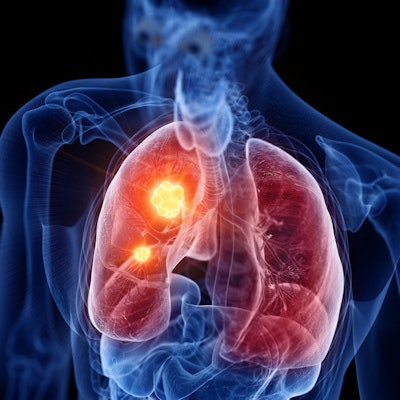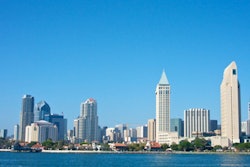
Updated CT lung cancer screening recommendations issued in 2021 by the U.S. Preventive Services Task Force (USPSTF) expanded eligibility for screening at the neighborhood level, according to a study published April 19 in Population Health Management.
If translated into targeted initiatives, the findings could boost CT screening uptake among individuals vulnerable to lung cancer, wrote a team led by Russell McIntire, PhD, of Thomas Jefferson University.
"Local health agencies should increase resources for outreach, education, and provision of lung cancer screening within ... neighborhoods, especially those with highest eligibility," the group wrote.
Last year, the USPSTF updated its recommendation for low-dose CT lung cancer screening, lowering the start age for annual screening from 55 to 50 and adjusting smoking history from 30 pack years to 20 pack years. The move was in part an effort to expand the screening eligibility pool, which some have criticized as not being sufficient for all Americans (for example, Black Americans tend to develop lung cancer at earlier ages and shorter smoking histories).
Although smoking rates in different Philadelphia neighborhoods have been mapped, it's unclear which districts have the greatest number of people eligible for lung cancer screening, McIntire's team noted. Therefore, the group sought to determine lung cancer screening eligibility among both smokers and all adults between the ages of 50 and 80 in Philadelphia districts using previous and current USPSTF recommendations and 2010, 2012, and 2015 data from the Public Health Management Corporation's Household Health Survey to identify types of smokers (current every day, current occasional, and former).
The group found that the 2021 USPSTF guidelines increased the overall number of Philadelphia residents eligible for CT lung cancer screening by more than 100%, from 41,946 to 89,231. This trend was true for all neighborhoods, but the greatest eligibility increases were in a district called River Wards, which has the highest smoking rates and the greatest smoking-attributed mortality of all other districts, as well as high levels of air pollution.
| Percentage of smokers eligible for lung cancer screening in Philadelphia districts by USPSTF guidelines (2013, 2021) | |||
| District | Percent eligible among smokers between the ages of 55 and 80, 2013 USPSTF guidance | Percent eligible among smokers between the ages of 50 and 80, 2021 USPSTF guidance | Ratio of smokers eligible for screening, comparing 2013 and 2021 guidance |
| All | 20% | 31% | 1.6 |
| Top 3 districts affected by 2021 lung cancer screening update | |||
| River Wards | 23% | 41% | 1.8 |
| North | 21% | 35% | 1.7 |
| Lower southwest | 22% | 36% | 1.7 |
The 2021 USPSTF lung cancer screening guidelines also expanded the eligibility pool among all people between 50 and 80 compared to the 2013 recommendation, from 11% to 18%.
A "granular" level understanding of individuals eligible for lung cancer screening by neighborhood is a good start toward improving uptake, but it must be used to develop concrete initiatives that support lung cancer screening, according to the authors.
"More resources for screening efforts (support for neighborhood or mobile screening, education campaigns, and outreach) should be deployed to the neighborhoods with the highest numbers ... and percentages ... of eligible individuals," they concluded.





















